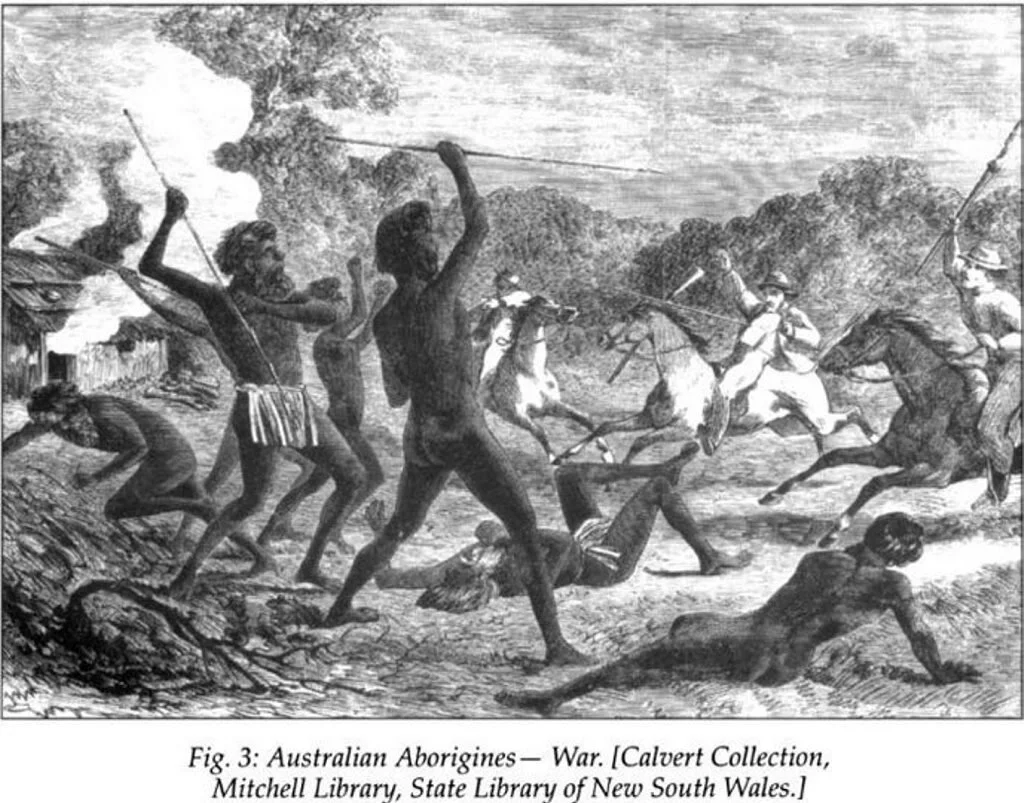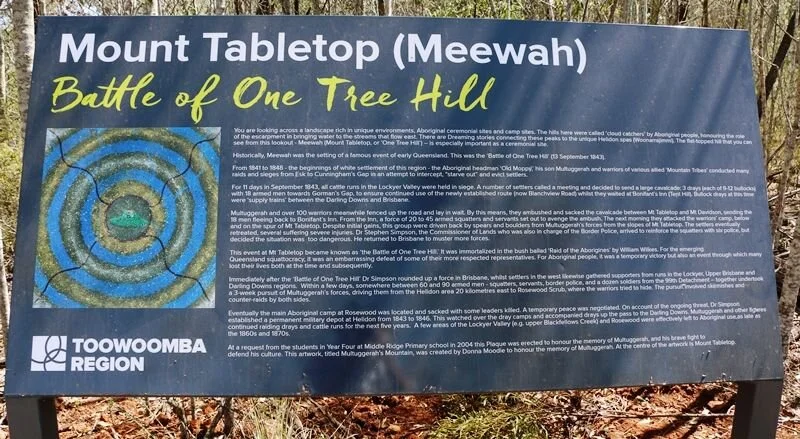The Battle of One Tree Hill is one of the most well-known series of conflicts that took place between European settlers and the Jagera and other Aboriginal groups in the Darling Downs area in the colony of Queensland in the 1840s, as part of the Australian frontier wars.
One Tree Hill, now known as Tabletop mountain, was the battle site for this conflict and the Jarega people were led by a man named Multuggerah, a fierce and tactical leader who triumphed over the colonial fighters.
Prior to the battle, settlers had only had minimal contact with native tribes from closer to the Moreton Bay settlement but had never come in contact with the Jagera people. Their leader, Multuggerah was content with maintaining distance from the settlers as long as they respected and did not encroach on their land: the Lockyer Valley. This did not last very long. By 1842, there were several colonial attempts to settle in the valley., Darling Downs and Upper Brisbane areas. However, they were met with fierce resistance from a collection of ‘mountain tribes’ united under Multuggerah, a warrior, strategist and diplomat. After the deliberate poisoning of 60 First Nation’s men in 1842 at Kilcoy Station, the resistance grew in force and Multuggerah hatched a plan to weed out the colonial squatters looking to settle in the area.
Him and his men began ambushing supplies that came through to the valley, gradually depriving the settlers of any resources as there remained only one road in and out of the newly settled area. Their success in stopping the cavalcade at One Tree Hill. The settlers attempted to retaliate but were easily stopped by the unfamiliar terrain. Multuggerah emerged victoriously.
However, attempts to colonise the area did not end here and Dr Simpson, a colonial settler and commissioner, continued with his efforts to overthrow Multuggerah and claim the area for 5 years. Many leaders were killed during attacks but reportedly not Multuggerah himself. The battle was memorialised in 2005 and in 2008, the Toowoomba Regional Council signed the Indigenous Land Use Agreement recognizing Jagera, Yuggera and Ugarapul people as the traditional owners of the area.
This resistance campaign was a symbol and a beacon of indigenous defiance against the colonial settlement. It was a day when First Nations people, stood up together and said ‘No more’. It was an incredible display of bravery and sacrifice that deserves great recognition and memorialisation.


